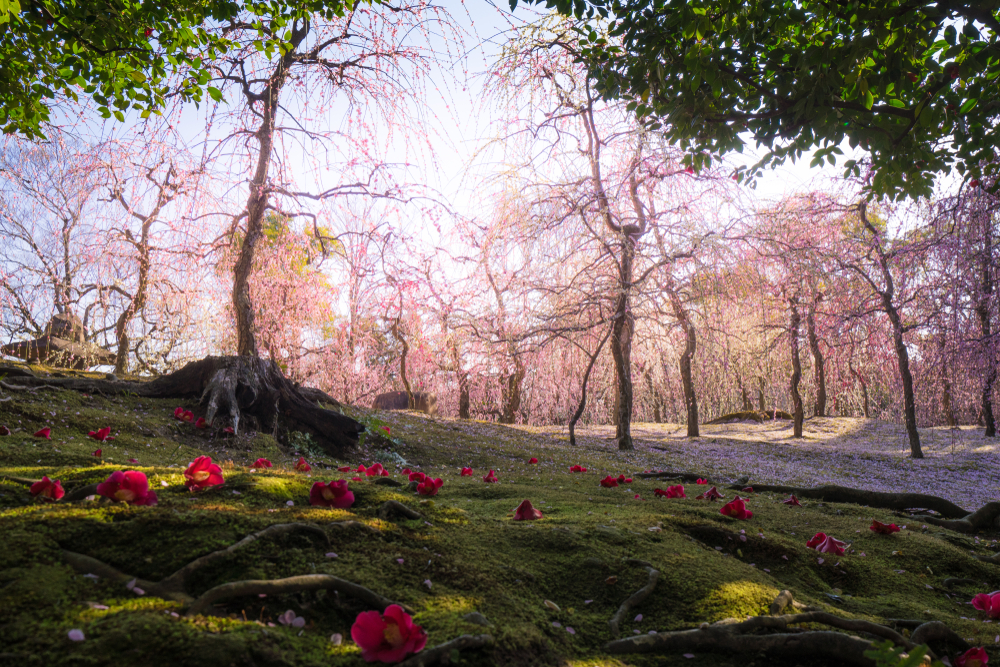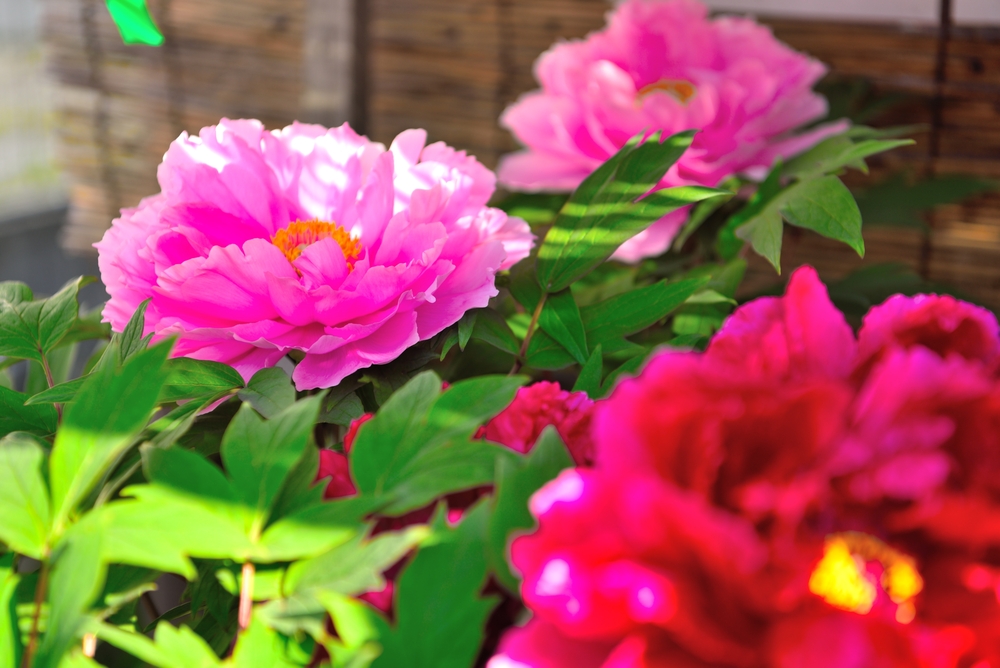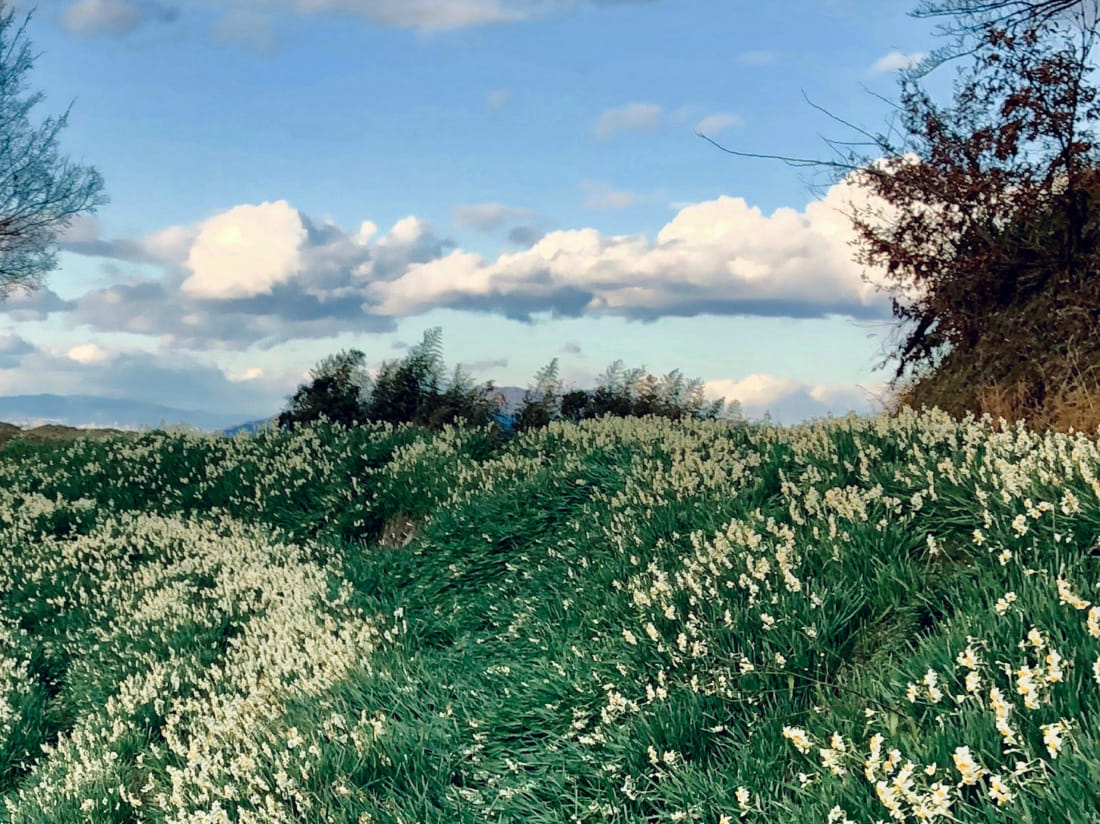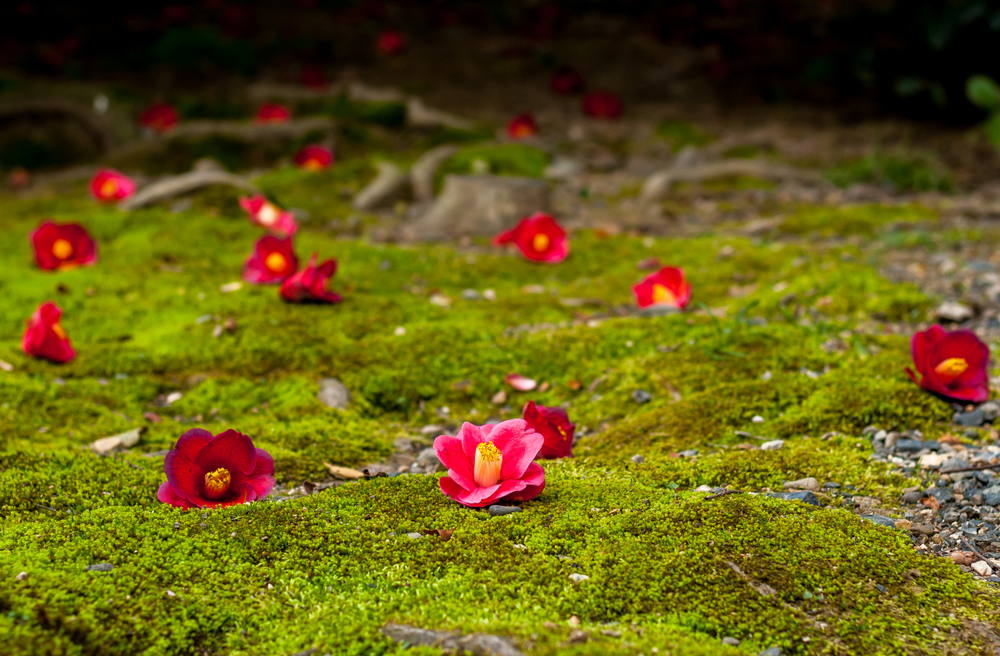“Along the river
Drift scarlet leaves;
In the mountain heart
Snow-melt waters
Must be rising even now”
Like what is conveyed from this waka (Japanese poetry) written during the Heian period, the ethereal beauty envisioned through the autumn leaves parting away has touched upon many people’s emotions throughout history.
“Buried in Winter,
How unexpected it is
Between the trees
To imagine flowers
In the fallen snow”
On the other hand, as you can read from this poetry by Kino Tsurayuki, the way in which the winter blooms endure the cold to brighten the snowy landscape has also struck a chord of many poets and artists alike.
In Kyoto, Nara and Osaka, the world of waka continues to live and offer fascinating sceneries gleamed by the winter blooms such as camellias, daffodils and peonies.
Here are some top spots in Kansai to admire the simple and humble aesthetics of these winter gems.

nishi takahiro / Shutterstock.com
Be Spellbound by Camellias at Kyoto’s Jonangu Shrine
During the Heian period (794–1185), when Kyoto served the as country’s capital, a political movement promoting Japanese native culture called kokufu bunka flourished amongst the noble class. Grand efforts were made to eradicate the influence of imported Buddhist values that once heavily influenced the national culture during the Nara period.
Built in 794, the Shinto shrine Jonangu reflects this shift in aristocratic culture, and the authentic beauty of Japan. Located north of the Fushimi district in Kyoto, the area surrounding Jonangu became a popular retreat for the imperial family, and successive emperors prayed at the shrine for peace and security.
The sprawling Rakusuien garden is the main draw for many visitors as they can can witness the many charms of the Heian era along with its evolution, year-round.
During winter, the deep scarlet red of the camellias dot the moss green carpet to create spell-binding sceneries. Also, when the 150 plum trees bloom in February, the sea of pastel pink becomes a perfect back drop for the camellias to look their finest – making the location absolutely snap-worthy for modern-day visitors.
Admission to Jonangu is ¥600.
For access to Jonangu on public transport, the most convenient way to reach the venue is to catch the Rakunan express bus (R’ex) from Kyoto Shinkansen Hachijo gate (approximately 15mins).

m161m161 / Shutterstock.com
The Tender-loving Care of Peonies at Nara’s Hasedera Temple
Located along the slopes of a mountain east of Sakurai city, Hasedera is a highly acclaimed “Flower temple” built in 686.
While Hasedera is most well-known for its extravagant view of the cherry blossoms in spring, the temple boasts other seasonal blooms. One of the lesser-known wonders, which certainly deserves mention, is the peonies of winter.
The winter peonies scatter across the ground of Hasedera and decorate its surroundings like ornaments throughout December to January. All of the peonies are carefully dressed in petite straw hats, so that the vulnerable flowers are not damaged from the frost of winter.
The cuteness of these peonies, combined with kindness and efforts of their caretakers, creates a heartwarming landscape. A glimpse of this scenery should surely have your winter blues beaten off in no time.
Admission fee to Hasedera is ¥500 yen, and the temple is open to the public free of charge on New Year’s Day.
For access to Hasedera on public transport, board the Mahoroba Line from JR Nara Station to Sakurai Station, then change to a Nara Kotsu bus for the Hasedera Sando Guchi bus stop.

Photo by Hiroko Asano
Finding Peace Amongst Daffodils at Osaka’s Chihayaakasaka Village
With all of the hustle and bustle of Osaka city, it is hard to imagine that any corner of the prefecture retains peace for the world of waka.
The small, quiet village called Chihayaakasaka, located southeast of Osaka, is the only remaining village of its kind within Osaka prefecture.
From January to February, the Chihayaakasaka Village is treated to beautiful landscapes of daffodils growing en masse. The delightful scent of these blooms fills the crisp winter air. The colors of white and yellow flowers against the green grass and blue skies creates splendid contrast, making this place a photographer’s dream.
Admission is free.
To access Chihayaakasaka Village on public transport, catch the Kintetsu Nagano line from Tennoji Abenobashi Station to Tondabayashi Station and change to a Kongo bus for Hokento mae bus stop, then walk a short distance to the venue.
Feature image: MyPixelDiaries / Shutterstock.com
Updated On December 26, 2022









